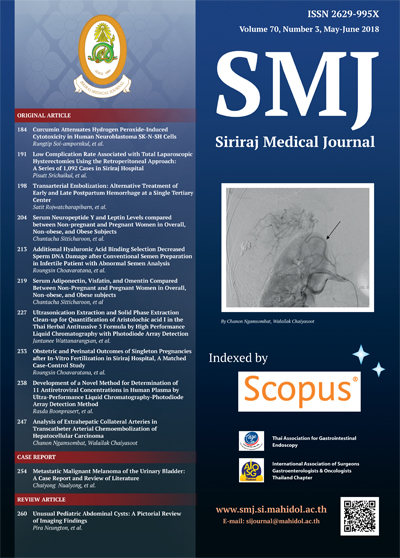Additional Hyaluronic Acid Binding Selection Decreased Sperm DNA Damage after Conventional Semen Preparation in Infertile Patient with Abnormal Semen Analysis
Keywords:
DNA damage; sperm preparation; density gradient centrifugation; swim-up; hyaluronic acid binding; TUNELAbstract
Objective: To study the benefit of combining conventional sperm preparation methods with hyaluronic acid binding in selecting spermatozoa with less DNA damage in infertile patients with abnormal semen analysis.
Methods: Forty-six semen samples obtained from infertile men, containing two or more abnormalities regarding concentration, motility or morphology, were enrolled in the study. Baseline semen analysis was performed and recorded for all samples. Each sample was divided into 3 aliquots, i.e. the control group / fresh sample before preparation (Group 1), the conventional sperm preparation group including both density gradient centrifugation and swim-up (Group 2), and the conventional method combined with hyaluronic acid selection group (Group 3). The DNA integrity of sperm obtained by each different test group was assessed using TUNEL assay.
Results: Less sperm DNA damage was observed in Group 2 compared to Group 1, whereas Group 3 displayed significantly lower sperm DNA damage compared to Group 2 (9.4% vs. 27.0%, p < 0.001).
Conclusion: Sperm DNA damage was significantly reduced after the inclusion of hyaluronic acid binding in conventional sperm preparation method in abnormal semen samples.
Downloads
Published
How to Cite
Issue
Section
License
Authors who publish with this journal agree to the following conditions:
Copyright Transfer
In submitting a manuscript, the authors acknowledge that the work will become the copyrighted property of Siriraj Medical Journal upon publication.
License
Articles are licensed under a Creative Commons Attribution-NonCommercial-NoDerivatives 4.0 International License (CC BY-NC-ND 4.0). This license allows for the sharing of the work for non-commercial purposes with proper attribution to the authors and the journal. However, it does not permit modifications or the creation of derivative works.
Sharing and Access
Authors are encouraged to share their article on their personal or institutional websites and through other non-commercial platforms. Doing so can increase readership and citations.










